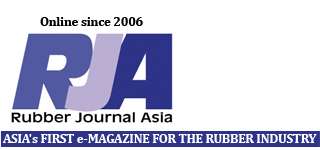Researchers at Northwestern University have invented a new material – a combination of poly (dimethylsiloxane) (PDMS), a porous polymer, and an Eutectic Gallium-Indium (EGaln) metal mixture that enables electronics to be stretchable. The material can be deformed to more than 200% (twice) its original size without breaking or losing its operational efficiency.
The researchers created specialized dielectrics and conductors from the new material. Using these two fundamental circuit building blocks, the team hopes to build super-stretchy circuits before long.
Civil and environmental engineering professor Yonggang Huang believes his new material overcomes a crippling 100x reduction to conductivity in rival materials when stretched. Base on the press release, he comments, “This conductivity loss really defeats the point of stretchable electronics.
With current technology, electronics are able to stretch a small amount, but many potential applications require a device to stretch like a rubber band. With that level of stretchability we could see medical devices integrated into the human body.
By combining a liquid metal in a porous polymer, we achieved 200% stretchability in a material that does not suffer from stretch. Once you achieve that technology, any electronic can behave like a rubber band.”
The new material can be visualized as a mostly hollow series of caverns. The walls of the cavern are the polymer. Inside the cavern is a treasure trove of highly conductive metal atoms. The net design remains highly conductive when stretched. The material has tremendous potential for in-body microelectronics, sensors, and wearable electronic devices, assuming that it can be produced affordably.
Professor Huang and his graduate student Shuodao Wang have published their work in the prestigious Nature Communications journal.
